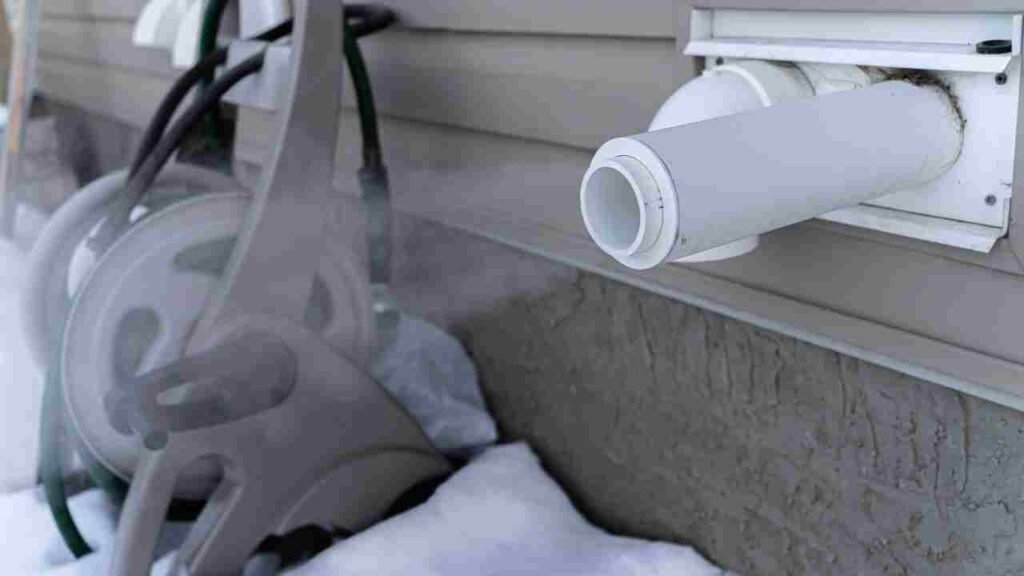
Today, we’re diving straight into a crucial task that often slips under the radar but can significantly impact your furnace’s efficiency. We’re about to unravel the secrets of cleaning your furnace exhaust pipe, the unsung hero responsible for venting harmful gases and maintaining proper airflow in your heating system.
Trust me, giving this often-neglected component some TLC will ensure the smooth operation of your furnace and safeguard the well-being of your home and loved ones. So, gear up, and let’s master the art of keeping your furnace exhaust pipe squeaky clean!
Furnace Exhaust Pipe:
When it comes to maintaining a well-functioning furnace, knowledge is power, and that begins with understanding the furnace exhaust pipe. This vital component is the escape route for harmful combustion byproducts, such as carbon monoxide, while allowing fresh air to enter the system.
By comprehending its role and importance, you’ll be equipped to keep your furnace operating efficiently and your home safe. Let’s dive deeper into the intricacies of the furnace exhaust pipe and unlock the secrets behind its critical function.
Essential Tools:
Now that we have a solid understanding of the furnace exhaust pipe, it’s time to gather the essential tools for the cleaning process. Equipping yourself with the right tools will ensure a smooth and effective cleaning operation.
So, before you embark on this maintenance journey, ensure you have a screwdriver, wire brush, vacuum cleaner with a brush attachment, and a cleaning solution suitable for your exhaust pipe type. These tools will be your trusted companions as you strive to keep your furnace exhaust pipe in top-notch condition. Let’s get ready to tackle the task with the right tools in our arsenal.
Step-by-Step Cleaning Process:
Now that you have gathered the essential tools, it’s time to roll up your sleeves and dive into the step-by-step cleaning process for your furnace exhaust pipe. By following these instructions carefully, you’ll ensure that your cleaning efforts are thorough and effective. Let’s get started:
Step 1:
Inspect for blockages or damage. Begin by visually inspecting the exhaust pipe for any visible blockages or signs of damage. Look out for debris, nests, or obstructions that might hinder the proper airflow. Take note of any areas that require extra attention during the cleaning process.
Step 2:
Remove the exterior cover. Using a screwdriver or a similar tool, carefully remove the exterior cover of the exhaust pipe. Set aside the screws in a safe place, ensuring you don’t misplace them.
Step 3:
Clearing debris with a wire brush With the exterior cover off, take your wire brush and gently scrub away any accumulated debris or residue from the pipe’s interior. Be thorough but cautious to avoid damaging the pipe.
Step 4:
Vacuuming and wiping down Use a vacuum cleaner with a brush attachment to remove any loosened debris from the pipe. Pay close attention to hard-to-reach areas. After vacuuming, take a clean cloth dampened with a suitable cleaning solution and wipe down the pipe’s interior to ensure a thorough cleaning.
Step 5:
Reassembling and securing the cover. Once the interior is clean, it’s time to reassemble the exterior cover. Ensure it fits snugly and secure it using the screws you set aside earlier. Be careful not to overtighten the screws, as this may cause damage.
By following these step-by-step instructions, you’ll be well on your way to a clean and efficiently functioning furnace exhaust pipe. Regular maintenance is key to keeping your heating system in optimal condition.
Regular Maintenance Tips:
Congratulations on successfully cleaning your furnace exhaust pipe! Now that it’s squeaky clean let’s discuss some essential tips for regular maintenance to keep your furnace running smoothly. By incorporating these practices into your routine, you’ll prolong the lifespan of your heating system and ensure its optimal performance. Let’s dive into the maintenance tips:
1. Schedule annual professional inspections:
While you can handle basic maintenance tasks like cleaning the exhaust pipe, it’s essential to have a qualified HVAC technician perform a thorough inspection of your furnace at least once a year. They can identify underlying issues and ensure everything is in proper working order.
2. Replace air filters regularly:
Your furnace’s air filters are crucial in maintaining clean air quality and efficient airflow. Check your filters monthly and replace them as needed, typically every 1-3 months. This simple task will prevent debris from accumulating and clogging the system.
3. Keep the area around the furnace clean:
Clear any obstructions or clutter around your furnace. This includes removing items stored too close to the unit and ensuring adequate airflow for optimal performance.
4. Monitor carbon monoxide detectors:
Carbon monoxide (CO) is a dangerous gas that can be produced by malfunctioning furnaces. Regularly test and check your carbon monoxide detectors to ensure they function correctly. Replace batteries as needed.
5. Stay vigilant for unusual sounds or odors:
Pay attention to any strange sounds or odors emanating from your furnace. Unusual noises or unpleasant smells can be indicators of underlying issues. If you notice anything unusual, don’t hesitate to contact a professional for assistance.
6. Stay on top of manufacturer recommendations:
Read and follow the manufacturer’s guidelines for maintenance and recommended service intervals. They provide valuable insights about your furnace model and help you maintain its warranty coverage.
Conclusion:
In conclusion, by mastering the art of cleaning your furnace exhaust pipe and implementing regular maintenance practices, you can ensure your heating system’s efficient and safe operation. Understanding the importance of the exhaust pipe, gathering the necessary tools, and following the step-by-step cleaning process will help keep your furnace running smoothly.
Additionally, scheduling annual professional inspections, replacing air filters regularly, and staying vigilant for any unusual signs or sounds are vital to maintaining your furnace’s optimal performance. Remember, taking care of your furnace prolongs its lifespan and provides you with a warm and comfortable home.
